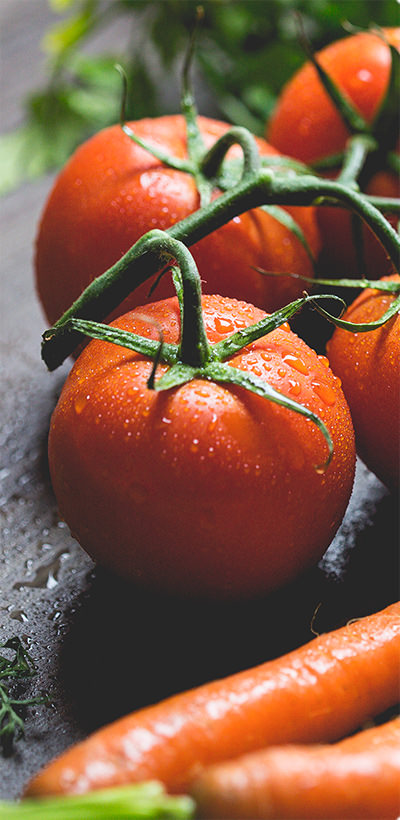Iris Collection 2
Iris germanica spp. An essential component of any cottage garden, these unmistakable flowers have a truly unique form. Consisting of only 6 petals, 3 upright standard petals and 3 downward fall petals. Few spring flowers offer the same dreamy fragrance and flamboyant display of Bearded German Iris. Height 33-38". No. 1 size roots.
This collection contains 4 roots, 1 each of Polite Applause, Mean Streak, For Veronica & Starting Fresh Bearded German Iris.
Fall Planting: This product will ship September-October according to your hardiness zone.
Scroll down for more details and growing information.

Details
Growing Information
Upon Arrival:
It is very important to plant these dormant perennials as soon as possible after you receive them. If it is necessary to store them for a short time before planting them, open the cartons and any plastic that is around the roots. If the roots appear dry, soak them for a few hours in warm water. Thereafter store in slightly moist peat moss in a cold, but not freezing location until you can plant. They can also be placed in pots of soil if planting will be delayed for more than 2 weeks. Use any packaged, peat-based potting soil and pots with drainage holes.
Planting General Info:
It is a good idea to soak any bare-root perennials in water for a few hours, but not more than a day, before planting. Most bulbs and perennials require 'well-drained' soil to thrive. Areas that often have 'sitting' water or constantly soggy soil can quickly cause roots to rot and deteriorate, especially over winter. Add organic matter to the area and provide good drainage unless the plant variety enjoys wet roots. Unless otherwise specified, bare-root perennials are usually planted with the crown (where the shoots meet the roots) an inch below the soil surface. Firm soil gently to eliminate air pockets and water in well. Mark the area clearly since it may be a while before the plant shows itself. Pay particular attention to watering any new plants during the first season. Once established plants generally have some drought tolerance and will only need to be watered if the season is hot and dry.
Planting Iris:
Set the rhizome just below the surface of the ground so that the top is exposed and with the true roots spread out into the soil below. Water the new plants every second day for the first ten days then cut back to once a week. Note that this is for new plantings only. Established iris clumps do not require water other than what they receive from natural rainfall unless you are experiencing a long drought period. Three rhizomes may be planted together to obtain a good-sized clump more quickly. The downside to this is that you must be prepared to divide the plant sooner. Spacing of plants varies with space available but usually individual rhizomes are planted 16-18 inches apart and clumps 24-30 inches apart. This allows good air circulation around the plants and proper sun exposure.
Growing:
Iris clumps should be dug up, divided, and replanted every 3-4 years, as when the clumps become large and overcrowded, flower production is greatly reduced. Use a garden fork and carefully dig the planting out of the ground. Next wash the remaining soil off and pull apart the root tangle. Then divide the rhizomes into single plants with a leaf fan on each, using a small sharp knife if required. Discard the old and any diseased rhizomes. The leaf fans should then be cut down to approximately 6 inches. The retained sections should be allowed to dry overnight to allow cuts to seal up before replanting. This will minimize chances of disease invading the rhizomes.
Tips for Reblooming Iris:
Reblooming iris generally show their second burst of colour 4-8 weeks after their initial spring bloom. This summer rebloom can sometimes carry all the way until the first frost in the fall. Summer rebloom is not as reliable as spring bloom, as factors such as soil quality, climate, and geographic location all affect summer rebloom. However, chances of rebloom can also be enhanced by altering a few simple cultural practices.
Divide More Frequently - Generally, bearded iris should be divided every 3-5 years. This ensures proper spring bloom. Left undivided too long, the iris will start converting all their energy into multiplying, rather than blooming. For reblooming varieties, this general rule of dividing every 3-5 years can be lessened. Because reblooming varieties can produce summertime blooms due to their accelerated growth cycles, they can benefit from division every 2-3 years.
Water More Frequently - Bearded iris once established are drought tolerant. Reblooming varieties are as well, but to increase the odds of summer rebloom, keep reblooming iris watered after the initial spring bloom and throughout the summer. Be careful not to overwater, bearded iris do not like wet feet!
Fertilize After Bloom - Kickstart the post-spring growth of reblooming varieties by applying a low nitrogen fertilizer, such as a 6-10-10 or bonemeal, a few weeks after the spring bloom.



